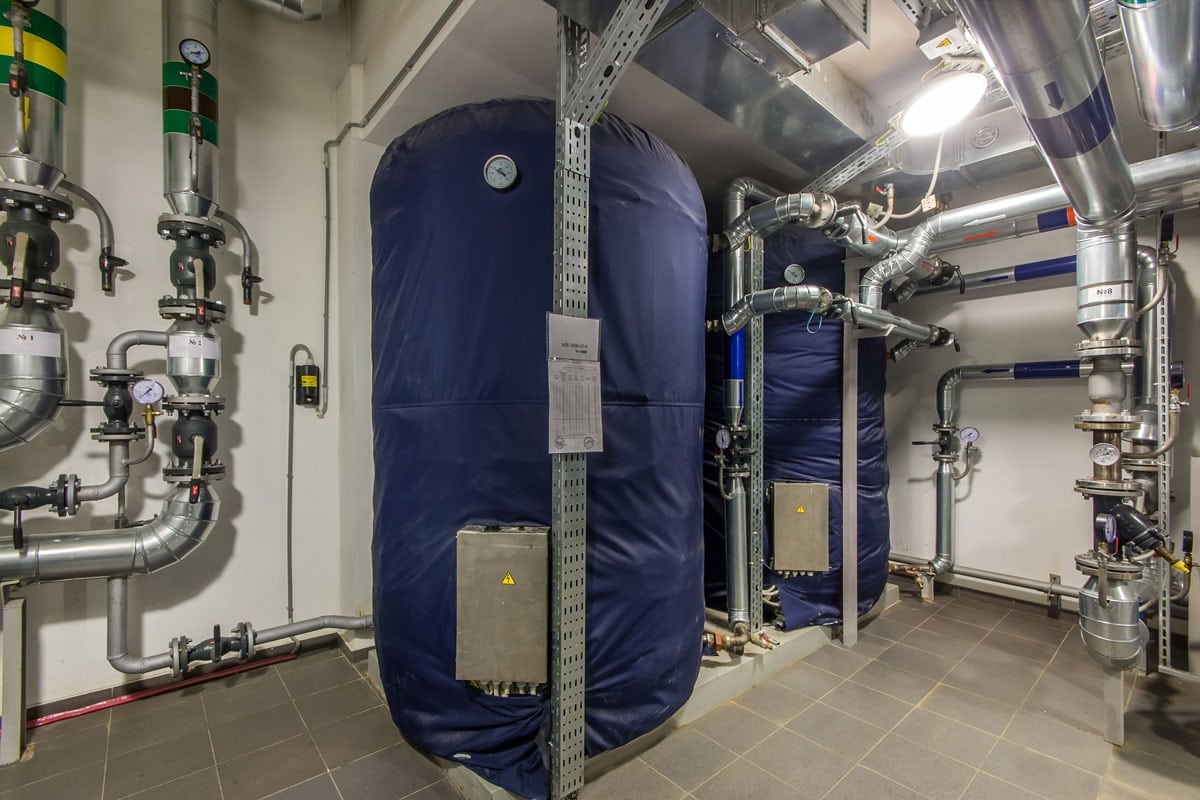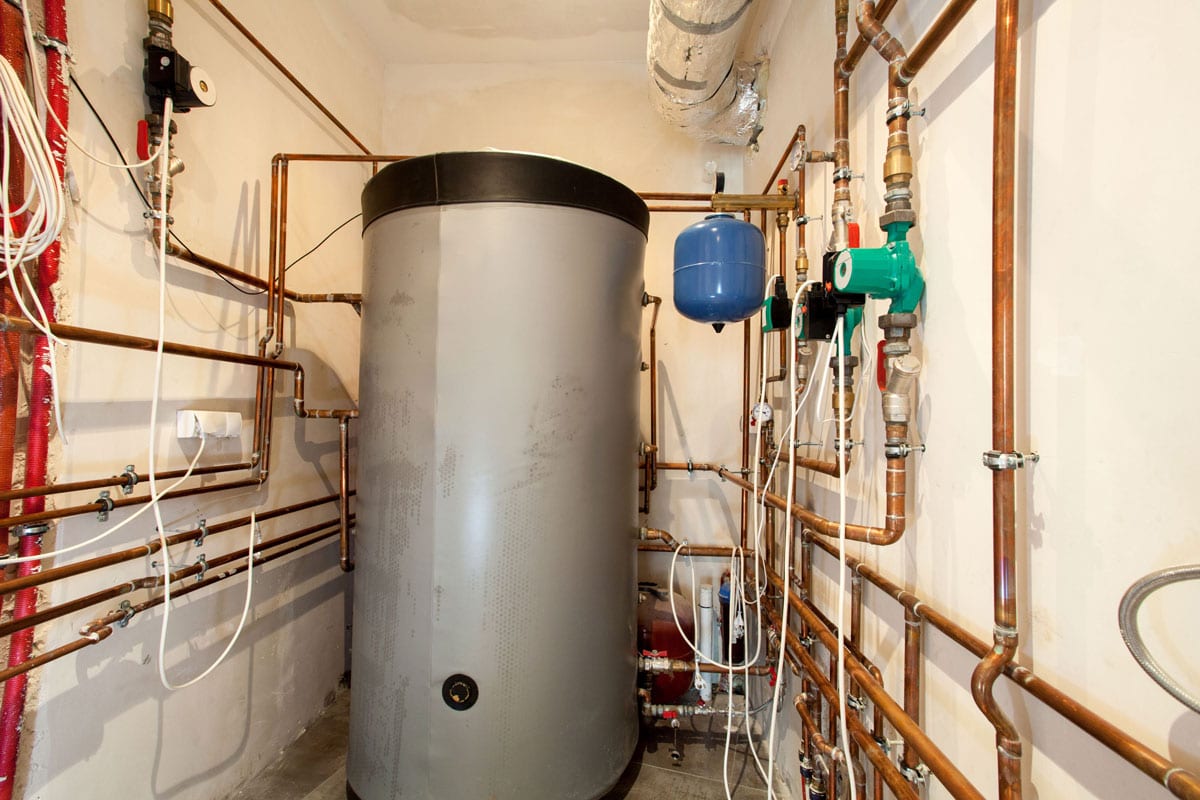It can be tough to choose between the Performance and Performance Plus water heaters from Rheem. Understanding the differences between these two models can help with your purchasing decision. We researched these products' dissimilarities, and here's what we found.
Rheem Performance and Performance Plus water heaters have some different features to help interested customers tell them apart. Some of these differences are with their:
- Quality and performance
- Heat source
- Accessibility and convenience
- Manufacturer warranty
Taking note of these distinctions can help shoppers make sound buying choices. Continue reading as we talk about these dissimilarities between these products in greater detail. We’ll also tackle some of the factors to think about when shopping for a water heater.

What Are The Differences Between Rheem Water Heater Performance And Performance Plus?

Despite having fairly similar looks, the Rheem Performance and Performance Plus water heaters have many different features to set them apart. In this section, you’ll learn about these dissimilarities to help you with your buying decision.
Quality and Performance
Both the Performance and Performance Plus models offer up to 98% uniform energy factor (UEF). This measurement provides users with a quick look at the performance rating of these water heaters. The difference lies in the materials used for the heating elements.
The Performance Plus has the upper hand over the Performance water heater for it uses a better copper construction for its dual-heating system.
On average, the Performance provides about .59 to .65 UEF by using two pieces of copper and anode rods. On the other hand, the Performance Plus has a more consistent average UEF of .93.
Upon seeing those numbers, the Performance Plus also typically lasts longer than the Performance model, thanks to the better efficiency. You can also read our post on how long does a Rheem water heater last to gain insight into its average lifespan.
Heat Source
The Performance water heater has a gas tank fueling the heating process, providing warm to hot water to household members and guests. This heat source often provides fast water heating capabilities while remaining energy efficient.
Also, users can still take advantage of hot water during a power outage with the Rheem Performance.
However, owners need to attach Performance water heaters to gas lines.
Expenses can increase if users decide to connect a Performance model to a propane tank instead of a city gas line. Plus, it can be tough to clean and maintain a gas water heater since it uses fire to heat the water in the plumbing system.
As for the Performance Plus, this water heater uses electricity to provide warm and hot water to a property. Take note that it’s not possible to use this model with no electricity without a backup power supply.
Still, it typically provides clean operations, increasing its lifespan and providing convenience for its routine cleaning and maintenance practices.
Keep in mind that electric heaters like the Rheem Performance Plus water heater also have a slower water-heating speed than the Performance model.
Check out this Rheem Performance tankless water heater on Amazon.
Accessibility and Convenience
The Rheem Performance water heater typically doesn’t have an LED screen. So it can be quite challenging to obtain the ideal water temperature for each user. Also, it generally has a pilot light, which may require manual relighting if it goes out.
On the other hand, the Rheem Performance Plus normally has a built-in display. That feature allows users to look at and fine-tune their water temperature preferences during use.
So in a bout between the Rheem Performance and Performance Plus, when talking about their accessibility and convenience, the latter might be a better choice for certain customers.
The Performance model can still be a good choice, though, if users won't mind the extra effort in maintaining the unit.
Manufacturer Warranty
If bought from the manufacturer or a reliable supplier, both the Performance and Performance Plus water heaters from Rheem have the brand’s limited warranty.
Despite coming from the same company, the Performance model only has a 6-year coverage while the Performance Plus has 9-year coverage.
Nonetheless, these two water heater models should share the same warranty inclusions and exclusions. Some of the things that this limited warranty doesn’t cover are:
- Service trips to teach users the steps to set up, use, or care for the water heaters.
- Incidents caused by improper installation.
- Damage, faults, and malfunctions are caused by user negligence.
Is Rheem Water Heater A Good Brand?

Rheem has been in the heating industry for almost a century (at the time of writing) and the company established a strong reputation among its loyal customers. Many people prefer Rheem for their water-heating needs because of different reasons, such as:
- Devotion to providing quality water heaters to offer homes consistent hot water supplies.
- Upholding the company’s duty to preserve the planet’s resources by manufacturing environment-friendly products.
- The incorporation of safety features in different water-heating units to extend their lifespans and prevent risks of user injuries.
Despite Rheem providing some excellent water heaters to its customer base, these models can still encounter some issues. For instance, you can read our post on what to do if a Rheem water heater isn’t working if you experience that problem with this water-heating system.
Check out this electric Rheem water heater on Amazon.
How To Install The Rheem Performance Plus Water Heater

Like relatively any water heater installation, setting up the Rheem Performance Plus requires careful handling of its parts. One wrong move can significantly decrease the lifespan of the unit.
Some errors may also result in a water heater burnout, which can potentially become an irreparable problem.
After taking note of the risks involved, the following steps will help you install a Rheem Performance Plus water heater with a low likelihood of errors:
What You’ll Need
- Compression fittings
- Rheem Performance Plus water heater kit
Step-by-Step Guide
- Install any compression fittings required by the plumbing system, such as the inlet, outlet, and overflow drain.
- Take another compression fitting and attach it to the top valve of the Performance Plus water heater.
- Connect the flex lines from the home’s plumbing system to the water heater.
- Open the main water lines and fill the tank. Ensure that the drain valve and hatch aren’t open for this step.
- Wait for the gurgling sound to stop. Then, connect the water heater to a nearby electrical power supply.
- Turn on the water heater and test if it works.
How To Find The Best Water Heater

Even though the Rheem Performance and Performance Plus products are good options as water-heating systems, some shoppers may want to take their time to take a look at other choices. If so, it’s best to think about certain factors to make the most out of the chosen water heater.
Some of the things to take note of are the following:
Type
Interested buyers can generally find five these main types of water heaters:
- Conventional: Often has a built-in water storage facility for daily use.
- Tankless: A great choice for users that want near-immediate access to hot water.
- Solar: As its name implies, water heaters under this class use the sun's power to generate sufficient heat to increase the water temperature.
- Condensing: Uses renewable exhaust gas to heat water.
- Heat pump: Also called a hybrid water heater, this type often uses heat from the air and ground to supply hot water to homes.
Fuel
Different water heaters also use various fuel sources to increase the temperature of connected water lines:
- Electricity: Reasonably available and relatively easy to access. Electric water heaters may also use other fuel sources like heating coils.
- Geothermal: Generally only used for heat pumps to provide sufficient water heating and cooling in properties.
- Natural gas: Typically used in tankless or rapid water heaters.
- Propane: Often used with water heaters for mobile homes and properties that don’t demand heated water supplies frequently.
Size
Water heaters often come in different sizes, which requires shoppers to choose the right model with the appropriate capacities and dimensions for their specific requirements. Here’s a list of the average tank capacities based on the number of users:
- 1 or 2 people: 23 to 36 gallons
- 3 to 5 people: 46 to 56 gallons
- Over 5 people: More than 56 gallons
Final Words

Interested shoppers should take a look at the differences between the Rheem Performance and Performance Plus water heaters before finalizing their purchasing decisions.
Keep in mind that both have similar looks but have different features related to their quality, performance, and heat source.



The article should also include the type of water that can be used & if your water has to be treated before enter The water heater.